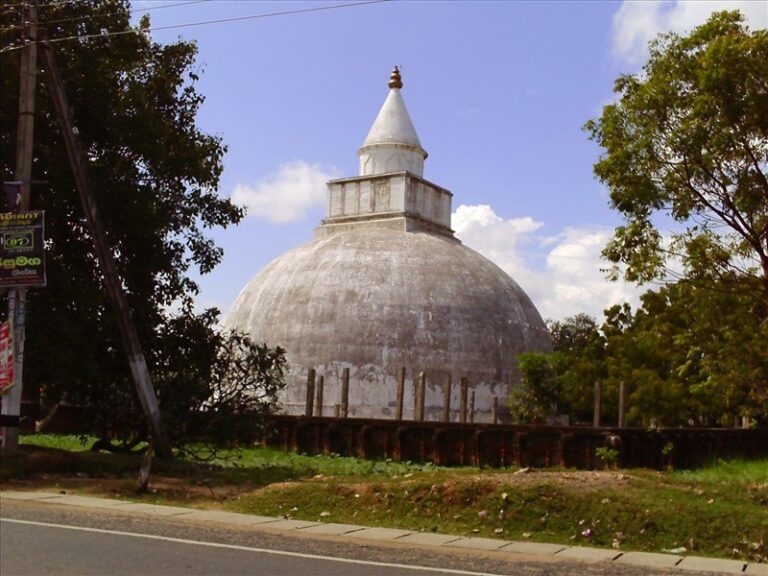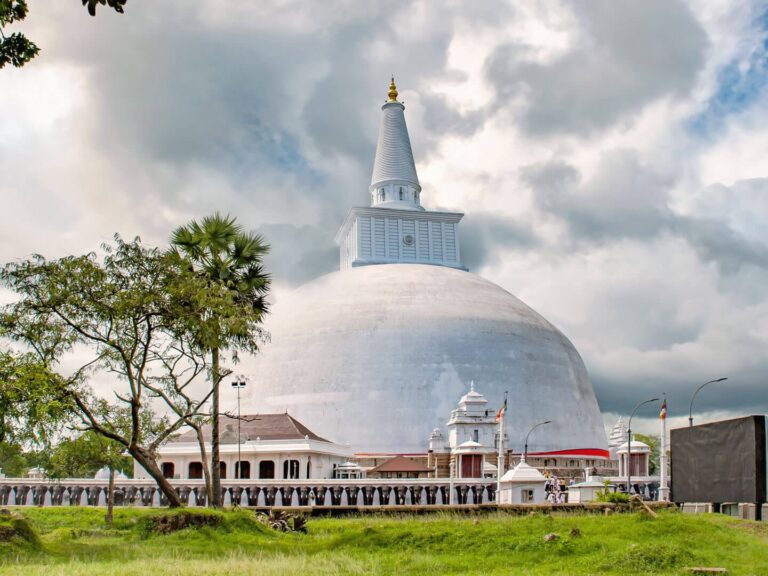Stitching Gold from Thread and Spice: How Zanzibar’s Souq Magic Can Rebirth Our Village Crafts

The equatorial sun beat down on Stone Town’s coral rag alleys that afternoon years ago. I watched, sweat trickling down my neck, as a spice guide named Juma split a green cardamom pod with the reverence of a gemologist examining a diamond. Eight German tourists leaned in as one. That crack of the knife, the sudden release of camphor and citrus – then the collective inhale. Smiles bloomed. Minutes later, those same visitors were cheerfully handing over shillings for a clove-carving workshop and a cooking class in a courtyard heavy with tamarind scent. What struck me, beyond the theatre, was the economic choreography. Every shilling pirouetted locally: farmer to guide, guide to cook, cook to woodcarver. No leakage. Pure circulation. Zanzibar, that fragrant archipelago, has spun spice-sensory storytelling into an economic lifeline. In 2023, they welcomed 638,498 visitors – a robust 16.4% jump. By 2024? 736,755 souls, another 15.4% surge, according to international tourism monitors and Tanzanian investment authorities. That’s not just tourism; that’s alchemy.
Now, stand with me on our own sun-drenched soil. Breathe deep. Cinnamon bark warming the air near Ratnapura. The metallic tang of molten brass in Pilimathalawa. The rhythmic click-clack of beeralu bobbins in a Matara veranda. Sri Lanka possesses craft lineages deeper than Zanzibar’s cloves, sensory assets as potent as their cardamom hills. Yet, where is our choreographed circulation? Where does the tourist rupee truly land after the trinket is bought?
Our recovery is real, friends. 2024 saw 2,053,465 arrivals – a heartening 38.07% surge over 2023. The coffers swelled too: USD 3.17 billion in earnings, a 53% year-on-year leap, as confirmed by the Central Bank of Sri Lanka and SLTDA. Momentum is ours. But momentum without direction is just… motion. It’s time to channel this energy where it ignites sustainable sparks: into the hands and hearths of our village artisans. This isn’t charity; it’s economic intelligence.
The Blueprint: Zanzibar’s Lesson, Lanka’s Opportunity What Zanzibar grasped is profound: Experiences outvalue objects. Tourists don’t just want a carved box; they want to feel the wood, smell the clove, know the carver’s name. They crave a story they helped stitch, hammer, or weave. This shifts the game:
- From Commodity to Memory: A bought mask is a souvenir. A mask you painted under a master’s guidance? That’s a chapter in your life story. Memories command premium prices and fierce loyalty.
- Margin Magic: Selling a pre-made lace coaster nets the artisan maybe Rs. 500 after middlemen take their cut. Charging USD 30 (approx. Rs. 9,000) for a 2-hour workshop where the tourist makes that coaster? The maths sings. Suddenly, funding apprenticeships, tool banks, and village solar isn’t a dream; it’s built into the pricing.
- The Leakage Plug: When the tourist pays directly for the experience in the village, to a community cooperative, the rupee stays put. No predatory wholesalers. No Colombo-based exporters siphoning value. Just transparent flow: visitor to artisan to community fund.
Why Now? The Stars Align Over Lanka
- Demand Roars Back (and Diversifies): Our 2.05 million 2024 arrivals aren’t just numbers; they represent pent-up desire and shifting tastes. Post-pandemic travellers seek meaning, connection, authenticity. They crave doing, not just seeing. And policy is finally catching up. Remember that free 30-day visa pilot launched October 2024 for 35 key markets – India, China, Russia, the EU? That’s friction dissolving, mirroring regional competitors. As the Central Bank noted in Q4 2024, earnings accelerated sharply – this isn’t a blip; it’s trajectory.
- Craft Depth – Our Untapped Fort Knox: We aren’t starting from scratch. We’re sitting on generational genius: Ambalangoda: Where Raksha masks snarl with centuries-old power, carvers like the Ariyapala lineage (documented in national museums and cultural studies) keep Kolam and Sanni traditions alive in living workshops. Pilimathalawa: The hammer’s song on brass here creates kukur pahana (oil lamps) and sesath fittings fit for ancient temples, a craft cluster nationally recognised and historically documented. Galle-Matara-Weligama Belt: The intricate dance of beeralu bobbins, a Portuguese-Dutch legacy kept alive by women whose skill is as breathtaking as it is economically fragile, frequently highlighted in national newspapers like The Sunday Times. Kandy Peri-Urban: Woodcarvers etching Kandyan motifs passed down since royal times, alongside vibrant handloom studios. Dambulla-Matale: Metalworkers shaping embossed lanterns whispering tales of village ceremonies. Muthurajawela-Negombo: Reed weavers crafting amidst Sri Lanka’s largest saline peat bog, a biodiversity hotspot recognised by conservation bodies. The raw material is here. The skill is here. The stories are here. We simply lack the stage and the fair till.
- The “Souk School” Difference: It’s not a shop. It’s a micro-academy. The core product isn’t a thing; it’s learning. This subtle pivot changes everything: Funds Training: Workshop revenue directly pays master artisans to train village youth, preserving skills. Incentivises Quality & Story: Tourists paying for an experience demand authenticity and narrative. Artisans are rewarded for depth, not just speed. Builds Community Capital: Transparent revenue sharing (visible on a board on the wall!) turns tourist rupees into village scholarships, clinic upgrades, water filters, solar panels. Tangible good.
The Model: Spice Souk Schools for Sri Lanka – 7 Grounded Pilots
Let’s move beyond theory. Here’s where and how it works, modelled on realistic Year-1 projections. These aren’t pipe dreams; they’re blueprints drawn from existing assets and conservative tourist flow estimates:
- Ambalangoda Mask Masters Academy (Galle District) The Craft & Place: Seventh-generation carvers. The Ariyapala Mask Museum is a natural anchor. Raksha, Kolam, Sanni aren’t just masks; they’re embodied mythology. The Experience: 90 mins. Paint a miniature mask tile. Decode the ritual significance of colours and demons. Witness a short, electrifying puppet demo. Pricing & Flow: USD 25/guest. 900 learners/year (75/month peak, 45/month off-peak). Year-1 Revenue: Workshops: USD 22,500. Gallery Sales: USD 18,000. Total: USD 40,500. Revenue Split (70/20/10): Artisans: USD 28,350. Village Fund: USD 8,100 (Mask library repair, youth apprenticeships). Ops/Marketing: USD 4,050. Why It Works: Existing museum pull. Direct coach access. Masks are iconic, giftable souvenirs.
- Pilimathalawa Temple Brass School (Kandy District) The Craft & Place: The sacred clang of hammer on brass. Kukur pahana, punkalasa – objects woven into our spiritual fabric. Family workshops cluster near Kandy’s temples. The Experience: 2 hours. Emboss a brass tile with a lotus or liyavel motif. Demystify the lost-wax process. Connect the dots to Embekke Devalaya’s legendary woodcarvings. Pricing & Flow: USD 35/guest. 1,200 learners/year (spillover from Temple of the Tooth circuit). Year-1 Revenue: Workshops: USD 42,000. Gallery (lanterns, small items): USD 30,000. Total: USD 72,000. Revenue Split: Artisans: USD 50,400. Village Fund: USD 14,400 (Tool loans, safety gear, micro-grants for women metalworkers). Ops: USD 7,200. Why It Works: Kandy’s unshakeable tourist flow. Brass has high perceived value and ritual significance. Perfect add-on.
- Beeralu Lace Cooperative School (Galle-Matara Belt) The Craft & Place: The delicate, time-consuming magic of bobbin lace. A craft sustained by women, facing market erosion despite its breathtaking beauty, as often reported. The Experience: 2 hours. Work a small trim under a master lacemaker’s eye. Browse a curated gallery showcasing modern lace collaborations – saree borders, table runners, contemporary fashion. Pricing & Flow: USD 30/guest. 1,000 learners/year. Year-1 Revenue: Workshops: USD 30,000. Retail (contemporary lace): USD 25,000. Total: USD 55,000. Revenue Split: Lacemakers: USD 38,500. Women’s Community Fund: USD 11,000 (Day-care support, product photography, design clinics with Moratuwa Uni). Ops: USD 5,500. Why It Works: Powerful gender equity story. Unique heritage. The “slow craft” narrative resonates globally.
- Kandy Handloom & Woodcarving Studio (Peri-urban Kandy) The Craft & Place: Kandyan grandeur expressed in wood and thread. Studios nestled near major attractions. The Experience: 90 mins. Engrave a traditional motif onto a wood coaster or keyholder. Witness the hypnotic rhythm of a handloom weaving ves hath (dancer’s skirt) material. Pricing & Flow: USD 25/guest. 900 learners/year. Year-1 Revenue: Workshops: USD 22,500. Retail (small carvings, fabric): USD 18,000. Total: USD 40,500. Revenue Split: Artisans: USD 28,350. Community Fund: USD 8,100 (Design scholarships, tool maintenance). Ops: USD 4,050. Why It Works: Seamless add-on to Kandy tours. Compact timing fits coach schedules. Royal motifs fascinate.
- Weligama Lace & Coastal Craft Studio (Matara District) The Craft & Place: Where bobbin lace meets beach vibes. A tradition persisting amidst surf schools and cafes. The Experience: 60 mins. A “taster” lace session creating a simple trim. Explore a vibrant bazaar of coastal crafts: shell art (ethical sourcing!), coconut fibre items, wave-inspired batik. Pricing & Flow: USD 20/guest. 1,200 learners/year (beach traffic). Year-1 Revenue: Workshops: USD 24,000. Retail (coastal crafts): USD 20,000. Total: USD 44,000. Revenue Split: Artisans: USD 30,800. Community Fund: USD 8,800 (Fisherfolk swim-safety programs, craftswomen micro-insurance). Ops: USD 4,400. Why It Works: Captures the beach tourist. Family-friendly. Highly “Instagrammable” (with consent!). Showcases coastal diversity.
- Dambulla Metalwork & Lantern Lab (Matale District) The Craft & Place: Metal embossing shining along the Dambulla-Sigiriya trail. Artisans crafting intricate lanterns for temples and homes. The Experience: 90 mins. Emboss a brass or copper panel destined for a lantern. Witness forging. Hear stories of light in Buddhist and village ceremonies. Perfect for late afternoon sessions. Pricing & Flow: USD 30/guest. 800 learners/year (Cultural Triangle flow). Year-1 Revenue: Workshops: USD 24,000. Retail (lanterns, small items): USD 22,000. Total: USD 46,000. Revenue Split: Artisans: USD 32,200. Community Fund: USD 9,200 (Workshop safety upgrades, night market lighting). Ops: USD 4,600. Why It Works: Extends visitor stay in the region. Lanterns are beautiful, transportable gifts. Unique “evening experience” niche.
- Muthurajawela Eco-Reed Craft School (Gampaha District) The Craft & Place: Sri Lanka’s largest saline peat bog – a biodiversity jewel. Local communities weaving reeds and rattan sustainably. Conservation is paramount (IUCN recognition). The Experience: 2 hours. Weave a reed placemat or basket base. Paired with a guided talk: wetland ecology, birdlife (egrets, kingfishers!), peat’s carbon role, community stewardship. Conservation fee embedded. Pricing & Flow: USD 35/guest. 700 learners/year (Premium, lower volume). Year-1 Revenue: Workshops: USD 24,500. Retail (eco-weaves): USD 12,000. Total: USD 36,500. Revenue Split: Artisans/Guides: USD 25,550. Conservation Fund: USD 7,300 (Mangrove nurseries, water testing, youth guide training). Ops: USD 3,650. Why It Works: Unique eco-craft hybrid. Enhances Negombo airport corridor offerings. Strong ethical tourism appeal. Direct conservation funding.
The Collective Spark: Pilot Impact (Year 1 – Conservative Estimate)
- Total Learners: ~6,700
- Gross Revenue: ~USD 334,500
- Direct to Artisans/Instructors (70%): ~USD 234,150 (New income injected locally)
- Community/Conservation Funds (20%): ~USD 66,900 (Scholarships, clinics, safety, mangroves, design)
- Operations/Marketing (10%): ~USD 33,450 (Sustainable upkeep)
Imagine: Over a third of a million USD annually, circulating within just seven villages, supporting 250-300 artisans directly, funding tangible public goods. This isn’t trickle-down; it’s targeted infusion. And this is just the pilot spark.
Making it Work: The Nuts, Bolts, and Soul
This isn’t about slapping a “Zanzibar model” sticker on Lanka. It’s thoughtful adaptation:
- Branding with Roots: Create the “Sri Lanka Artisan Souk Network” – an umbrella with powerful sub-brands: Ambalangoda Mask Masters, Pilimathalawa Temple Brass, Beeralu Lace Collective, Muthurajawela Eco-Weaves. Develop a beautiful, practical “Craft Trail Map” linking all seven sites, session times, pre-booking links (simple QR codes!). Integrate it into hotel concierge tablets, DMC (Destination Management Company) itineraries, Sri Lankan Airlines stopover packages.
- Smart Yield Management: Time slots are key: 10:00 AM, 1:30 PM, 3:30 PM to catch coach tours. Cap class sizes at 10-12. Quality over quantity protects the experience and the artisan. Offer “private masterclass” slots at double price for peak season or discerning travellers. Bundle strategically: Masks + Galle Fort walking tour. Brass + Temple of the Tooth + Kandyan dance. Reed weaving + Negombo lagoon boat ride.
- Radical Transparency – The Trust Engine: This is non-negotiable. Each Souk School must have a prominent “Living Ledger” wall: Weekly sessions conducted Total income generated Rupees disbursed that week to artisans (named, if they consent) Rupees moved to the Village/Conservation Fund Photos of what the Fund enabled (e.g., “New water filter installed at X school funded by last month’s lace workshops”). Publish a simple quarterly public dashboard online showing arrivals vs. SLTDA trends, average artisan income change, % of women/youth earning.
- Product Integrity: The retail gallery is not for factory knock-offs. Every item should have a label: Maker’s Name, Village, Materials, Time Taken, Motif Story. Actively foster contemporary collaborations (e.g., Beeralu lace with a Colombo fashion designer; Pilimathalawa brass with a minimalist lighting brand) under clear, fair IP licensing agreements facilitated by the EDB.
- Guardians of Culture & Safety: A mandatory 2-day induction for all front-line staff (guides, cashiers) covering: Deep cultural context of the craft (no superficial babble) Respectful photography protocols (Ask First! Always!) Safety briefings (PPE for metal/brass workshops, child-safe zones) Handling difficult questions ethically.
- Ironclad Ethics & Legal Compliance: This model stands on principle: Intellectual Property Act No. 52 of 1979: Sacred. Artisan designs belong to the artisans/clusters. Watermark patterns digitally. Co-op legal support enforces licenses for any commercial replication. ICCPR Act No. 56 of 2007: Zero tolerance for discrimination, exploitation, or indignity. Ban “poverty safaris.” Use multi-lingual (Sinhala/Tamil/English) consent forms for photos/videos/testimonials. Child Protection: Absolutely no child labor. Workshops involving youth must be verified educational apprenticeships, not exploitation. Eco-Accountability (Muthurajawela): Partner formally with conservation NGOs (e.g., IUCN affiliates, local environmental groups). Tie eco-session revenue directly to measurable outputs: X mangroves planted, Y water quality tests conducted, Z youth guides trained. No greenwashing.
Facing the Questions (Because Editors Will Ask)
- Q: Do tourists really pay for workshops? A: Resoundingly yes. Zanzibar’s 3-5 hour spice farm tours (found on major booking platforms) are a staple, often including cooking or craft elements. Travel trends globally show explosive growth in hands-on, skill-based tourism. Our pilot pricing (USD 20-40) is conservative compared to global benchmarks.
- Q: Can Sri Lanka’s tourism sustain this? A: The 2024 numbers (2.05m arrivals, 53% earnings growth) signal robust recovery. Policy tools like the free visa pilot are actively stimulating high-volume markets. Crucially, this model is resilient: small, high-margin classes can thrive even if overall arrivals dip slightly. It’s about value, not just volume.
- Q: Are the artisans truly ready? A: Absolutely. Ambalangoda’s mask museum and workshops are visitor-ready. Pilimathalawa’s brass clusters operate openly. Beeralu lacemakers are organised, though underpaid. The infrastructure exists; this model organises, monetises, and elevates it with fair systems. The teaching aspect is inherent in these craft traditions – passing skills is in their DNA.
- Q: Won’t this get corrupted or diluted at scale? A: The risks are real, but mitigated by design: Cooperative ownership, the “Living Ledger,” QR code direct payments to co-op accounts (bypassing individual hands until disbursement), strict IP enforcement, and class size caps. Sri Lanka’s craft sector already leans into ethical narratives; this provides the formal structure to make it real and auditable. Scale comes through replication (more clusters), not inflating existing sites into factories.
The Call: Let’s Weave This Future Together
To the SLTDA, the Provincial Tourism Authorities, the Export Development Board, the National Craft Council, the leaders of our hotel chains and DMCs, and most crucially, the village societies and artisan guilds:
The moment is ripe. The demand is here. The policy wind is at our backs. Our crafts are world-class, waiting only for the right stage and the fair deal. We possess the governance templates, the ethical frameworks, and the Zanzibar proof-of-concept.
Let’s commit, within this next tourism year, to launching this 7-site Spice Souk School pilot. Not as a government handout, but as a collaboratively built, community-owned enterprise. The investment needed is modest compared to the payoff: revitalised villages, preserved heritage, artisans earning their true worth, tourists carrying home irreplaceable pieces of living Lanka, and a global reputation for ethical, immersive tourism done right.
Imagine:
- The next visitor in Kandy, not just photographing a temple, but hammering a gleaming brass lotus under a master metalworker’s guidance, understanding its sacred geometry.
- The next family in Galle, not just buying lace, but sitting under a veranda, bobbins clicking in their own fingers, learning the rhythm from a grandmother’s hands.
- The next transit passenger near Negombo, not just killing time, but weaving Muthurajawela reeds as egrets glide over the wetlands, their fee planting mangrove saplings.
Let them learn. Let them pay fairly, directly, transparently. Let their rupees fund the futures of the hands that teach them. Let’s choreograph our own economic magic, stitch by golden stitch, hammer blow by hammer blow. Zanzibar showed the way. Now, let Lanka show its depth.
Disclaimer
This article has been authored and published in good faith by Dr. Dharshana Weerakoon, DBA (USA), based on publicly available data from cited national and international sources (e.g., Sri Lanka Tourism Development Authority, Central Bank of Sri Lanka, international tourism monitors, conservation bodies), decades of professional experience across multiple continents, and ongoing industry insight. It is intended solely for educational, journalistic, and public awareness purposes to stimulate discussion on sustainable tourism models. The author accepts no responsibility for any misinterpretation, adaptation, or misuse of the content. Views expressed are entirely personal and analytical, and do not constitute legal, financial, or investment advice. This article and the proposed model are designed to comply fully with Sri Lankan law, including the Intellectual Property Act No. 52 of 1979 (regarding artisan rights and design ownership), the ICCPR Act No. 56 of 2007 (ensuring non-discrimination and dignity), and relevant data privacy and ethical standards. ✍ Authored independently and organically through lived professional expertise—not AI-generated.
Further Reading: https://dharshanaweerakoon.com/saudi-arabia-for-sri-lanka/






